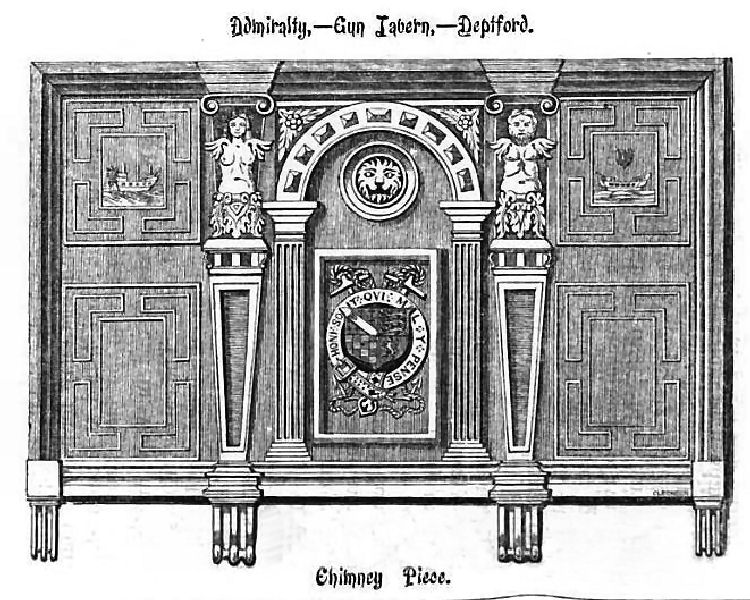Sort file:- Deptford, March, 2021. |
||||||
Page Updated:- Sunday, 07 March, 2021. |
||||||
| PUB LIST | PUBLIC HOUSES | Paul Skelton | ||||
|
Earliest 1600s |
Gun Tavern |
Closed 1807+ |
||||
|
Deptford
It is suggested that the premises was built circa 1568 and that it operated as a Tavern some time in the 1600s and 1807. Deptford was also apparently the residence of the Earl of Nottingham, instrumental in helping destroy the Spanish Armada - he was supposed to have resided in the "Gun Tavern." At the north end of Deptford Green, the Skinners Place property was leased to Lord Howard of Effingham, Admiral of England, in the late sixteenth century, and this appears to be the origin of the Lord High Admiral's official residence on the Green in the seventeenth century. It had two wharves with yards, several gardens enclosed with a brick wall, a barn and a stable, and a number of houses held by sub-tenants. The main house was rebuilt shortly before 1568. This building later became the "Gun Tavern" and in 1807 it was converted into dwellings and warehouses owned by Messrs Gordon, Biddulph and Stanley, anchor-smiths. The property later passed to the General Steam Navigation Company.
LICENSEE LIST
|
||||||
|
If anyone should have any further information, or indeed any pictures or photographs of the above licensed premises, please email:-
|
||||||
| TOP |
|
|
||||
